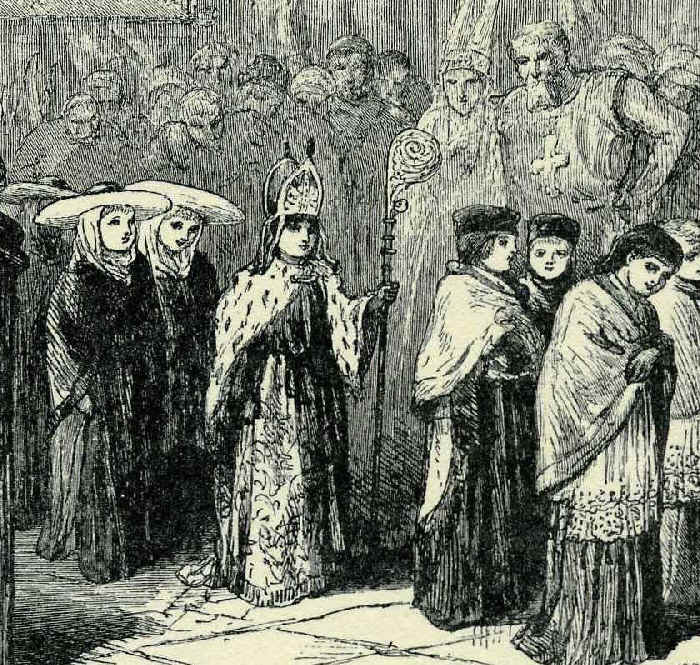In the Middle Ages carolers were viewed as troublesome pests …
Lenten Campaign 2025
This content is free of charge, as are all our articles.
Support us with a donation that is tax-deductible and enable us to continue to reach millions of readers.
The Christmas celebrations we know—the tree, the gift-giving, the Nativity sets—haven’t always been the norm. Christians of the Middle Ages had all sorts of ways of celebrating this holiday, some likely strange and unfamiliar to us today. Here are some medieval Christmas traditions you might not have heard of.
Adam and Eve Day: Christmas Eve used to go by this other name, consciously drawing a contrast between Adam and Eve of the Old Testament and the new Adam and Eve, Christ and Mary. The feast day was commemorated with mystery plays and paradise trees decorated with apples and wafers that symbolized the Eucharist. (See sources are here and here; Aleteia has also previously written on this topic.)
Rogue carolers: Singing carols is one of the most beloved traditions of Christmas today, but in the Middle Ages carolers were viewed as troublesome. The word carol dates back to 1300 and originally referred to a kind of a circle dance. It also came to be associated with joyful singing. But carolers were not always a welcome presence. The current practice of carolers going from door to door apparently goes back to a medieval ban on them participating in Christmas Masses, presumably because they disrupted the liturgy, according to one history site.
Boy bishops: Certainly one of the stranger customs was the election of the “boy bishop” from a choir on December 6, the feast of St. Nicholas. Here is one description of the election in Rouen, France:
At Vespers (probably on December 5th), the boys processed from the vestry to the altar of the Holy Innocents, then the boy bishop gave the blessing. The next day the baculus was exchanged during the Magnificat. The real bishop stepped down while “deposuit potentes” (“He has put down the down from their thrones”) was sung, while the boy took his seat during “exaltavit humiles” (“and he has lifted up the lowly”).
According to British historian Ronald Hutton, the widespread practice is rooted in the importance of children to the kingdom of God in Jesus’ own teaching. The boy bishops served in their (symbolic) roles until the Feast of Holy Innocents on December 28.
The trolls of Iceland: While most of us associate grandfatherly Santa Claus with Christmas, Icelandic children grow up in fear of 13 trolls, known as Yule Lads, who visit their homes from December 23 to January 6. The children leave shoes out for the trolls. Those who have behaved will receive gifts. Those who haven’t get potatoes. (Sources here, here, and here.)
Mumming: This is the practice of wearing masks and visiting one’s neighbors. Mummers would do various acts like “singing, dancing, or putting on a play with a silly plot,” according to one history site. Their tendency to wear masks and not speak has preserved “mum” as a word still used today in the expression “mum’s the word,” which means to not say anything about something private or secret.









